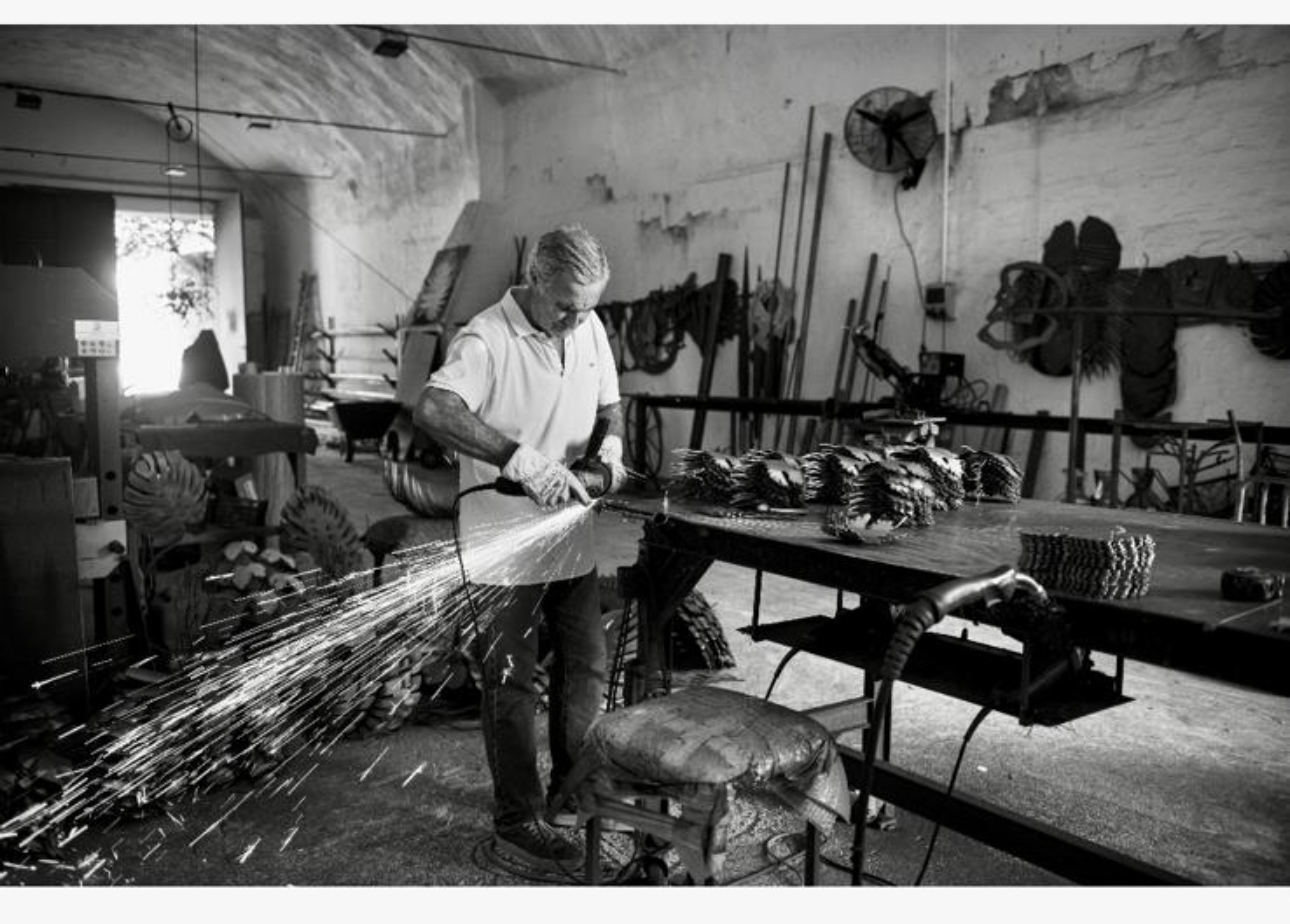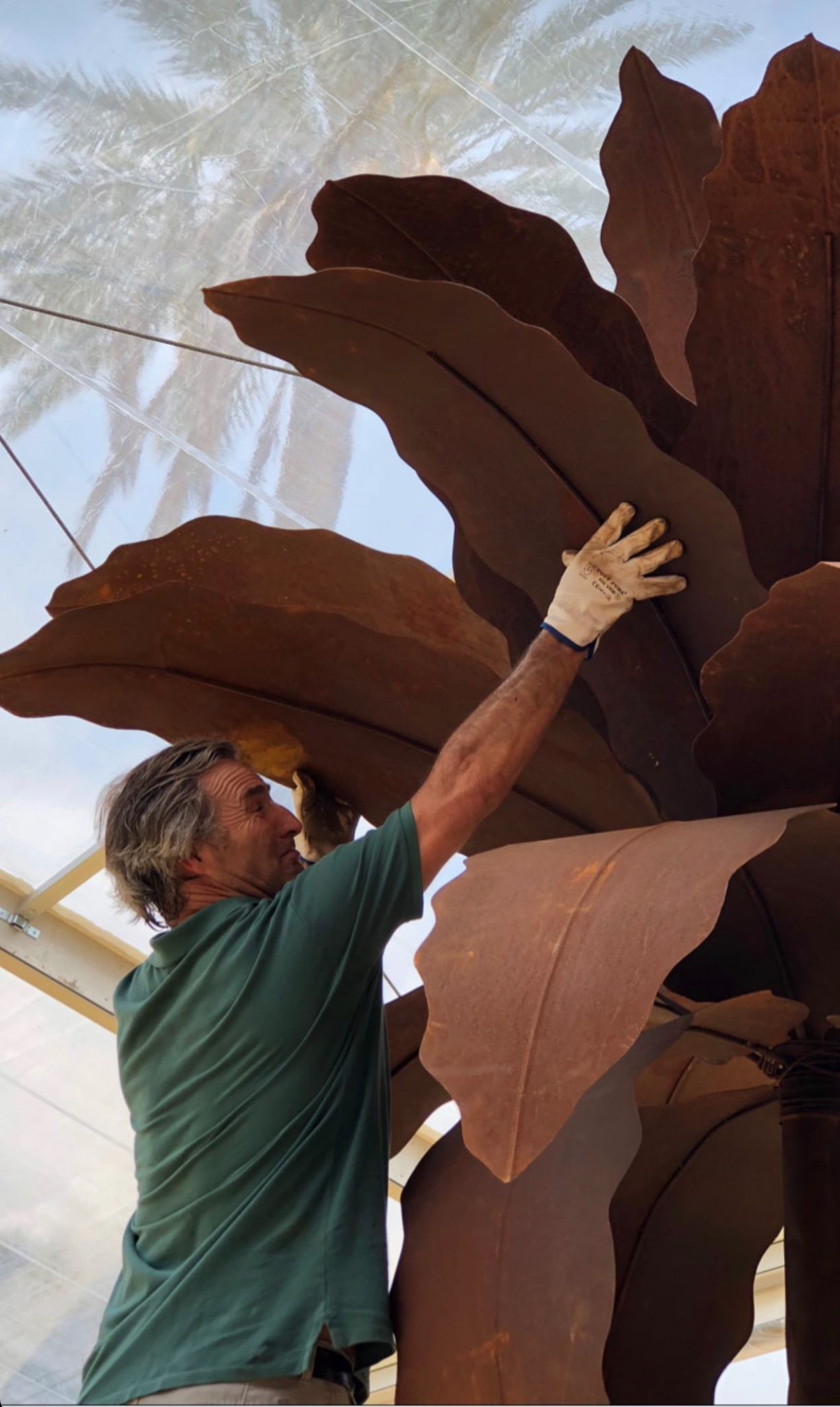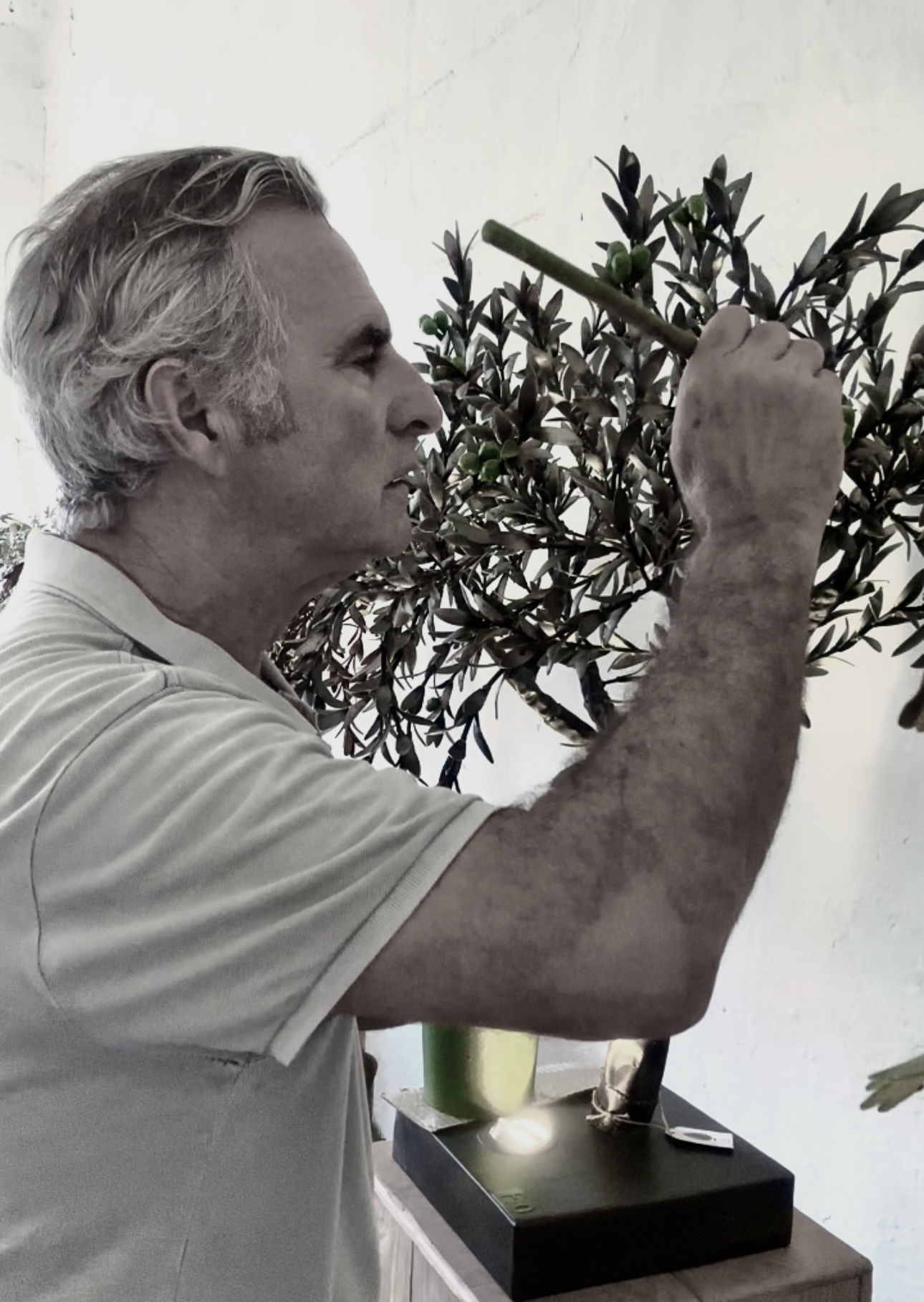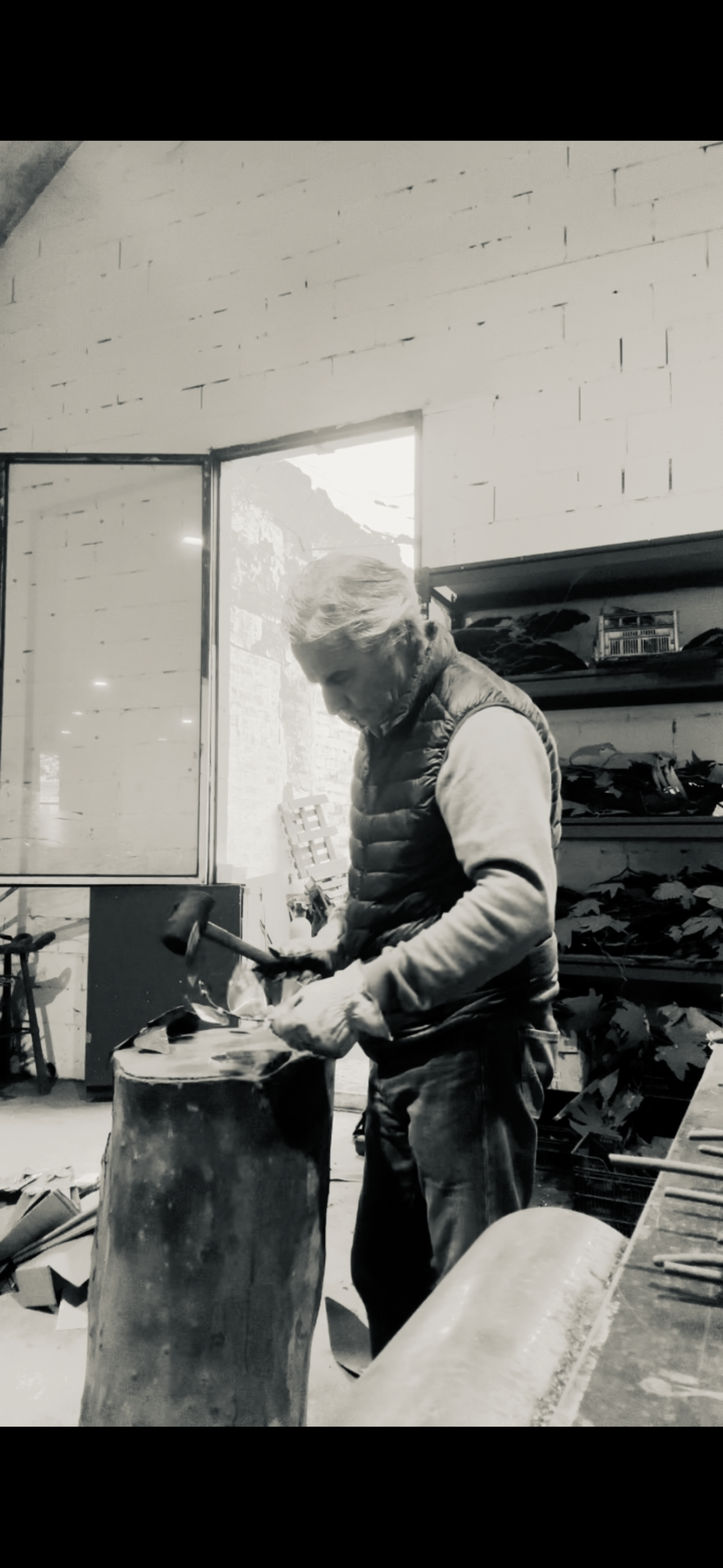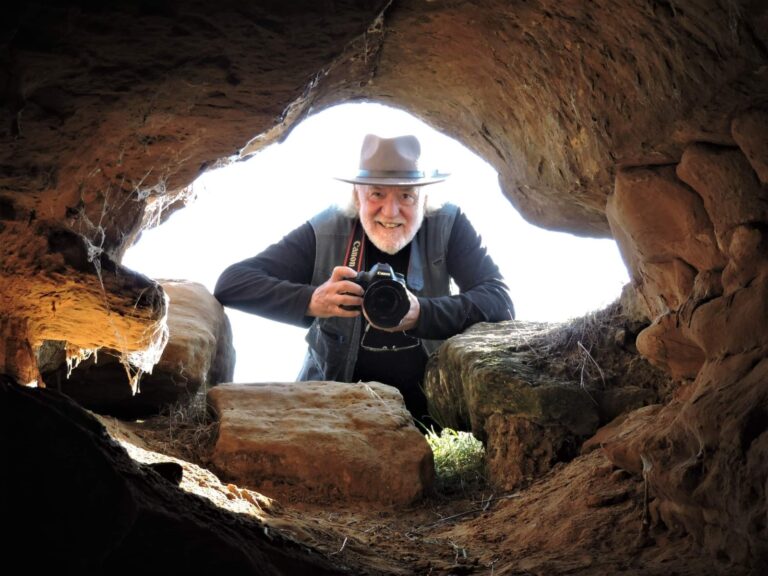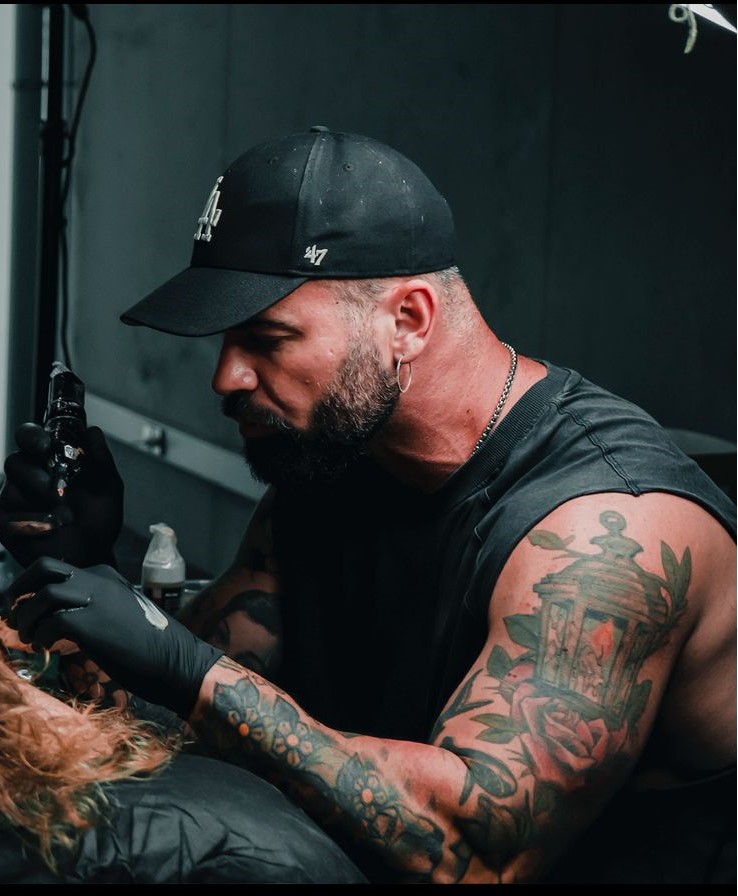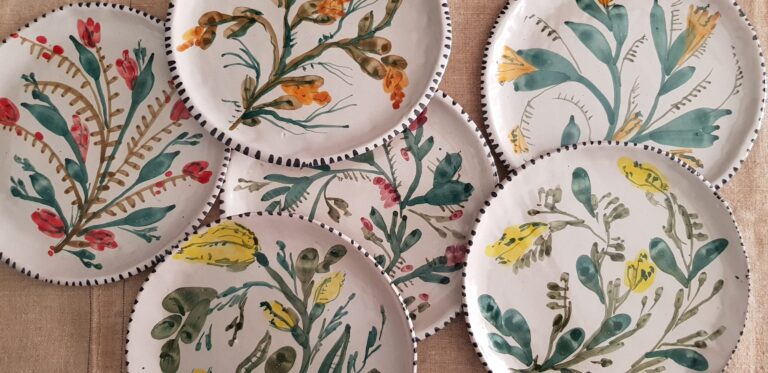Fernando Oriol
His great-grandfather, José Luis, was one of the founders of Talgo. That sounds robust. His mother, Marta, runs a flower shop in Seville, favored by the aristocracy. And that sounds light, right? Well, that is, in part, the key to the success of this Sevillian sculptor's work: the dichotomy between heavy and light, the contrast between the hardness of Corten steel, iron, and brass, and the lightness of calla lilies, Adam's ribs, prickly pears, banana trees, magnolias, and palm trees.
Always passionate about nature, this botanical goldsmith creates exuberant pieces and metal gardens with great skill, observation, and meticulous attention.
Today, Fernando Oriol, the soul and hands of this sculptural and decorative concept, takes off his welding mask and gloves and pauses from his tireless work to tell us about his life and work:
Hi Fernando, do you know where your most distant piece is installed?
At the Raffles Hotel in Singapore. There are also pieces of mine in Abu Dhabi, Mexico, and almost all of Europe.
You started with wooden furniture before dedicating yourself to this craft. Why metal and not another raw material?
I started using steel because it was what I knew how to shape best for the type of sculpture I wanted to make.
Which historical sculptor/artist would you go with for a drink in Seville to discuss your respective work?
I would go with Jaume Plensa. I love his sculptures.
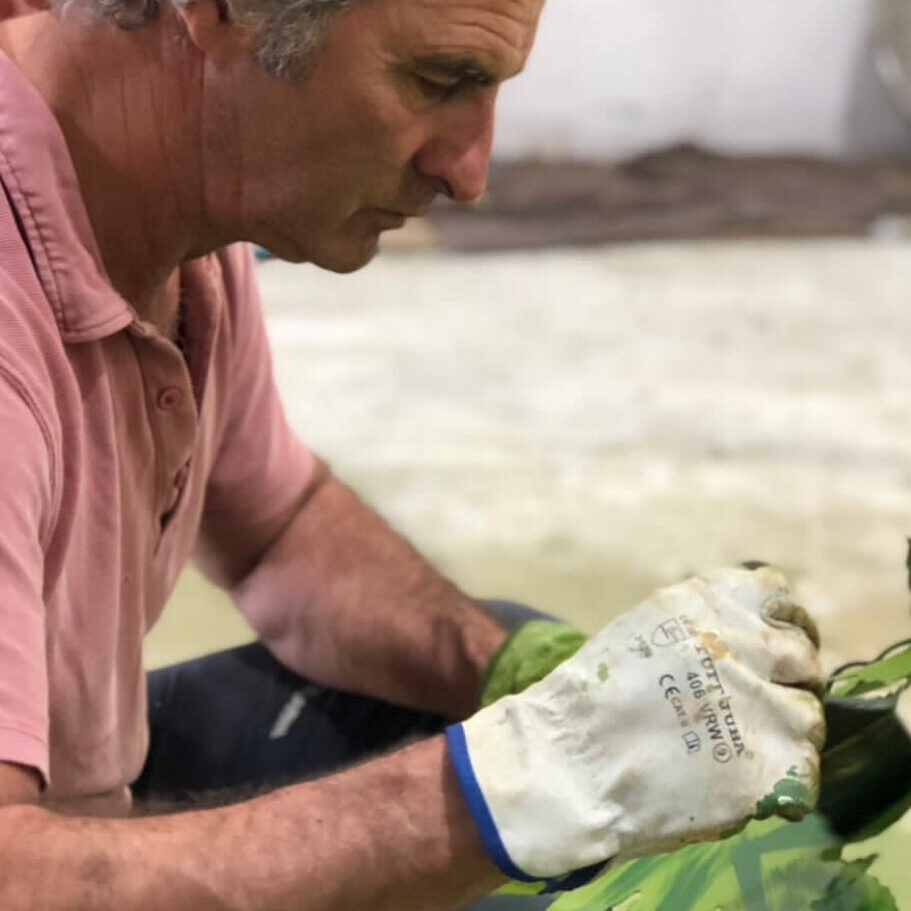
Of all the materials you use, do you have a favorite for its ease of work or the final finish?
All my sculptures are made of steel. It's a very malleable material.
Do you listen to music or radio programs while you work? What kind?
Escucho todo tipo de música mientras trabajo, pero especialmente de los 80 y 90. También la radio a veces.
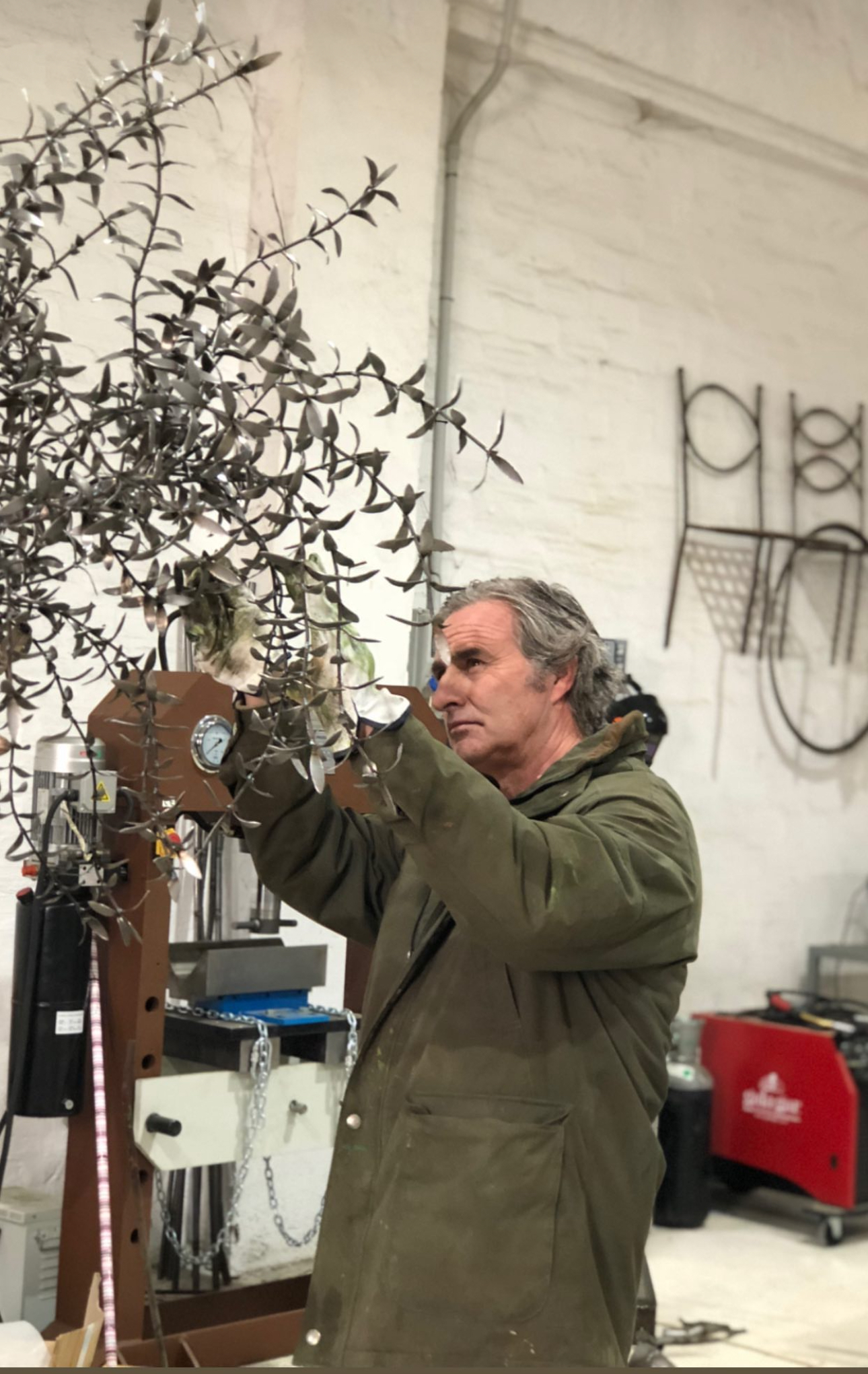

You draw, paint, cut, weld... What is your creative process like from the moment you receive a commission?
My process begins with drawing directly on the steel sheet. The next step is cutting the drawn pieces, and once cut, the leaves are shaped using heat. The next step would be assembling the sculpture in clean steel to give the leaves movement and then disassembling it again and starting with the painting.
You've exhibited your work several times. Is there any exhibition that stands out in your memory? Why?
I have very fond memories of the exhibitions in Madrid, Capri, and Zurich.
What is your favorite place in Andalusia?
My favorite spot in Andalusia is Carmona, although I also love the white villages of Cádiz.
¿Has utilizado alguna vez medios informáticos, digitales, virtuales o nuevas tecnologías para tus diseños? ¿Qué opinas de la Inteligencia Artificial aplicada a tu profesión?
My work is completely handmade, without the help of computers or anything. I never make two pieces alike, and I think that's part of the charm. I think AI can be very interesting in other sectors, but if applied to my work, it would take away a lot of its personality.
The artist, the artisan, works hard and spends many hours alone. What does El Pino de San José mean to you?
El Pino de San José is a family estate where I have my workshop. I've lived there my whole life, and there are many fond memories from my childhood.
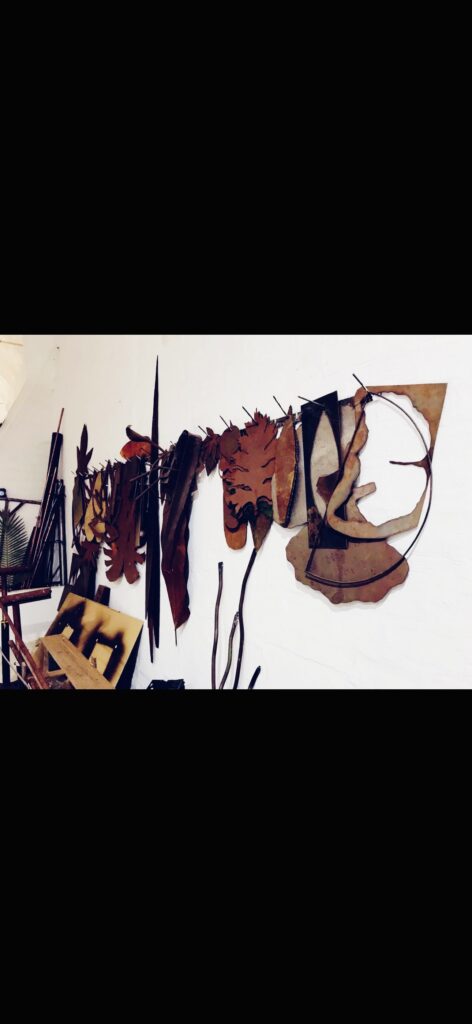
Our last guest, Julia de Castro, dejó esta pregunta para el siguiente protagonista: ¿qué cambiarías en una capital de provincia como Ávila o similar, para que hubiera un acceso más fácil a la cultura?
Pues yo fomentaría jornadas culturales abiertas y de fácil acceso en la ciudad.
Could you leave us a question for the next guest?
Si tuvieras que definir tu obra, ¿cómo lo harías?

